At markets throughout lowland Vietnam, you’ll easily spot baskets of small reddish-purple apples with slightly rough skin and golden flesh, labeled as “Ha Giang rock apples.” These crisp, sweet, and juicy apples sell for quite reasonable prices, just 15,000 to 25,000 VND per kilogram, making them very popular among shoppers.
However, if you ask actual Ha Giang residents about these apples, most have never heard of them, nor has anyone grown them locally. So what exactly are Ha Giang rock apples? Are they truly a specialty from the gray limestone region? Join Phieu Travel as we explore the truth in the following article.
1. The truth about Ha Giang rock apples
According to confirmation from Ha Giang Province’s Department of Agriculture and Rural Development, no areas within the rocky plateau region grow fruit called “Ha Giang rock apples.” In reality, these are Fuji apples, widely cultivated in China and imported into Vietnam through informal border trade. Advertising them as Ha Giang products is simply a marketing tactic designed to attract customer interest.
Using the “Ha Giang” name is a commercial strategy to build trust, as the rocky plateau region is often associated with clean, chemical-free fruits. Nevertheless, according to Associate Professor Dr. Nguyen Duy Thinh, former researcher at Hanoi University of Technology’s Institute of Food Biotechnology, if these apples have a clear origin, are properly preserved, and thoroughly washed and peeled before eating, they are completely safe to consume.
For this reason, if you’ve already fallen in love with the crisp, refreshing taste of these apples, there’s no need for excessive concern! What matters most is purchasing them from reputable sources, washing them thoroughly, and peeling them before eating – then you can enjoy them with complete peace of mind.
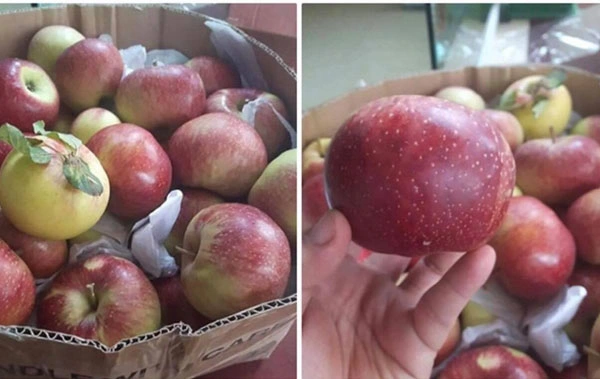
2. Natural gifts from Ha Giang
Although Ha Giang doesn’t grow the rock apples many people believe in, this rocky plateau region is blessed by nature with many delicious fruits closely tied to the soil, cool climate, and rhythm of indigenous life. Below are fruits you should try if you visit Ha Giang in the right season.
2.1 Bac Quang green oranges
In late year, when the cold begins to arrive, Bac Quang green oranges enter their peak ripening season. Orange groves in Vinh Hao, Vinh Phuc, Viet Hong, and Tien Kieu simultaneously change color, painting entire hillsides orange. The harvest atmosphere buzzes with activity as trucks loaded with plump fruit leave the orchards, heading down to the lowlands.
Oranges from this region have thick, slightly rough skin, deep yellow pulp, and are bursting with juice that offers a distinctive sweet flavor with a slight tang. This orange variety thrives only in Bac Quang’s cool climate and red soil mixed with gravel. With over 900 hectares of orange cultivation and annual yields exceeding 6,000 tons, oranges have become the main income source for residents throughout the district. Many households even earn substantial profits after just one harvest.
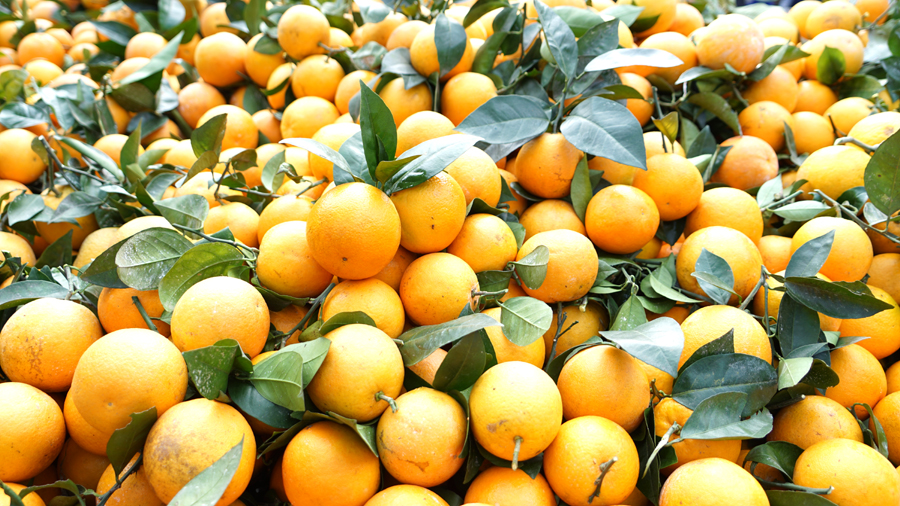
2.2 Dong Van pears
Dong Van boasts the largest pear-growing area in Ha Giang, with over 300 hectares spread across Pho Cao, Pho Bang, Pho La, Lung Cu, Ma Le, and other communes. Around September and October, pear orchards cover the gray rocky slopes with lush green foliage and sweet ripe fruit. The pears grown are primarily native varieties, VH6, and Taiwanese types – all well-adapted to the year-round cool climate of the rocky plateau.
Dong Van pears typically have a sweet, refreshing taste and contain abundant vitamins A and C, plus minerals. You can enjoy them fresh, made into jam, or dried – all equally delicious. Thanks to gradually shifting toward organic cultivation, pear prices remain stable, ranging from 20,000 to 50,000 VND per kilogram. Many families in Sung La and Pho La have escaped poverty through pear cultivation, with some households earning over 100 million VND annually from their orchards.
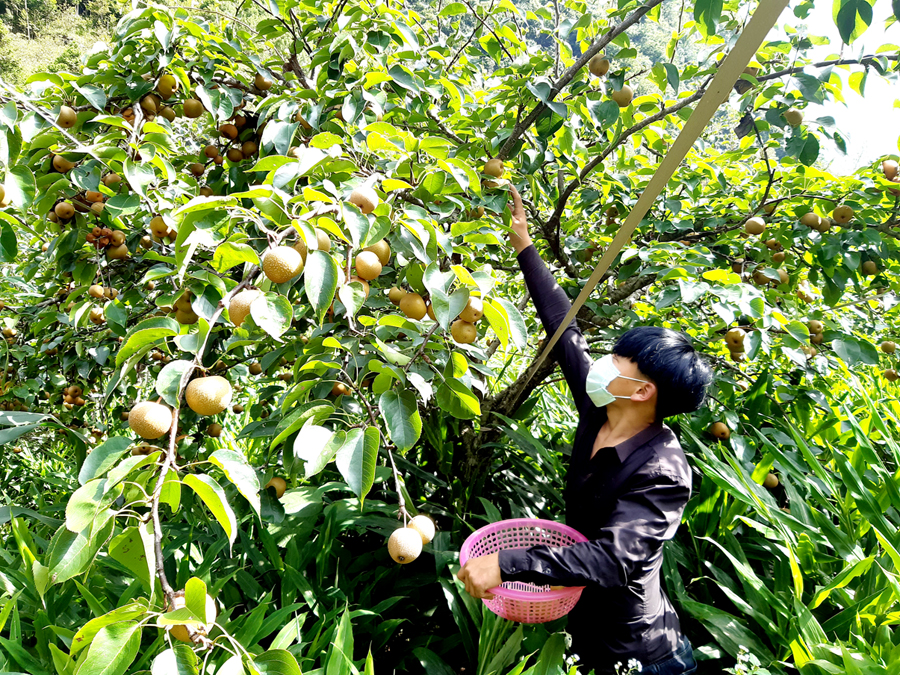
Best places to visit in Northern Vietnam a complete 2025 guide
2.3 Quan Ba seedless persimmons
Quan Ba seedless persimmons are one of the most renowned specialties of Ha Giang’s rocky plateau. This native persimmon variety has been cultivated by Hmong, Dao, Tay, and Bo Y ethnic communities for hundreds of years and preserved until today. When ripe, the fruit has yellow skin, large stems, abundant astringency, and a rich sweetness without bitterness. After harvesting, persimmons are soaked in water for several days to remove sap before being sold at markets for 25,000 to 35,000 VND per kilogram.
Quan Ba’s soil and year-round cool climate help this persimmon variety develop steadily, with few pests and consistent annual yields. In fact, many ancient persimmon trees over 300 years old in Nghia Thuan commune still bear fruit annually. Persimmon season runs from late August through November. This is also when visitors can tour orchards, pick fruit themselves, and buy crisp, sweet persimmons directly from the tree.

2.4 Cao Ma Po peaches
The peach variety grown in Cao Ma Po commune of Quan Ba district originated from the Mau Son region of Lang Son. When brought to Ha Giang, this peach variety thrived thanks to the cool climate, limited rainfall, and nutrient-rich hillside soil. The peaches have a fine, fuzzy skin that turns light pink when ripe, with crisp, sweet flesh that easily separates from the pit. Thanks to organic cultivation methods, Cao Ma Po peaches are highly regarded for their cleanliness and fruit quality.
During each peach harvest season (around June to early July), orchards in the Chin Chu Lin and Vang Cha Phin villages become bustling. Tourists come to experience picking fruit themselves and purchase peaches to take home for about 20,000 to 30,000 VND per kilogram. This model of combining peach cultivation with experiential tourism has brought stable livelihoods to many households in Cao Ma Po.
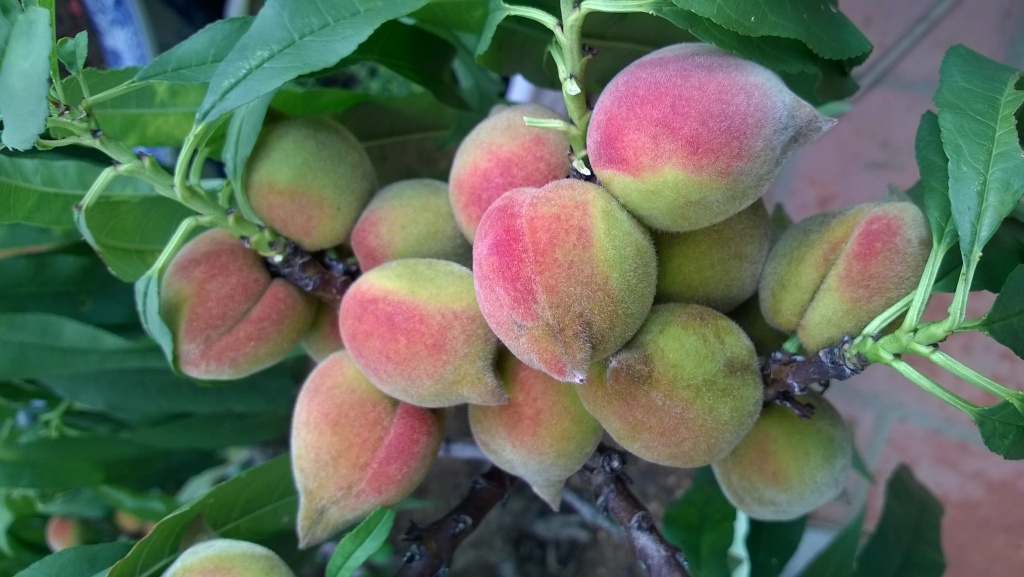
2.5 Hoang Su Phi blood plums
When early summer sunshine bathes the terraced hillsides in gold during June, Hoang Su Phi blood plums come into season. The ripe plums hide beneath canopies of young green leaves, with a deep red color like wine, a mild sweetness, crispness, and juiciness. This is a native plum variety, also called blood plum or Chi Khay La, primarily grown in the district’s northern highland communes such as Chien Pho, Then Chu Phin, Ban May, and Thang Tin.
Red plum trees grow naturally with few pests and require minimal care. In the past, plums were scattered around fields mainly for home consumption. However, in recent years, as plums have commanded better prices with traders purchasing directly from orchards, many households have expanded their cultivation areas and shifted to concentrated planting. Hoang Su Phi blood plums currently sell for 30,000 to 35,000 VND per kilogram at the orchard.
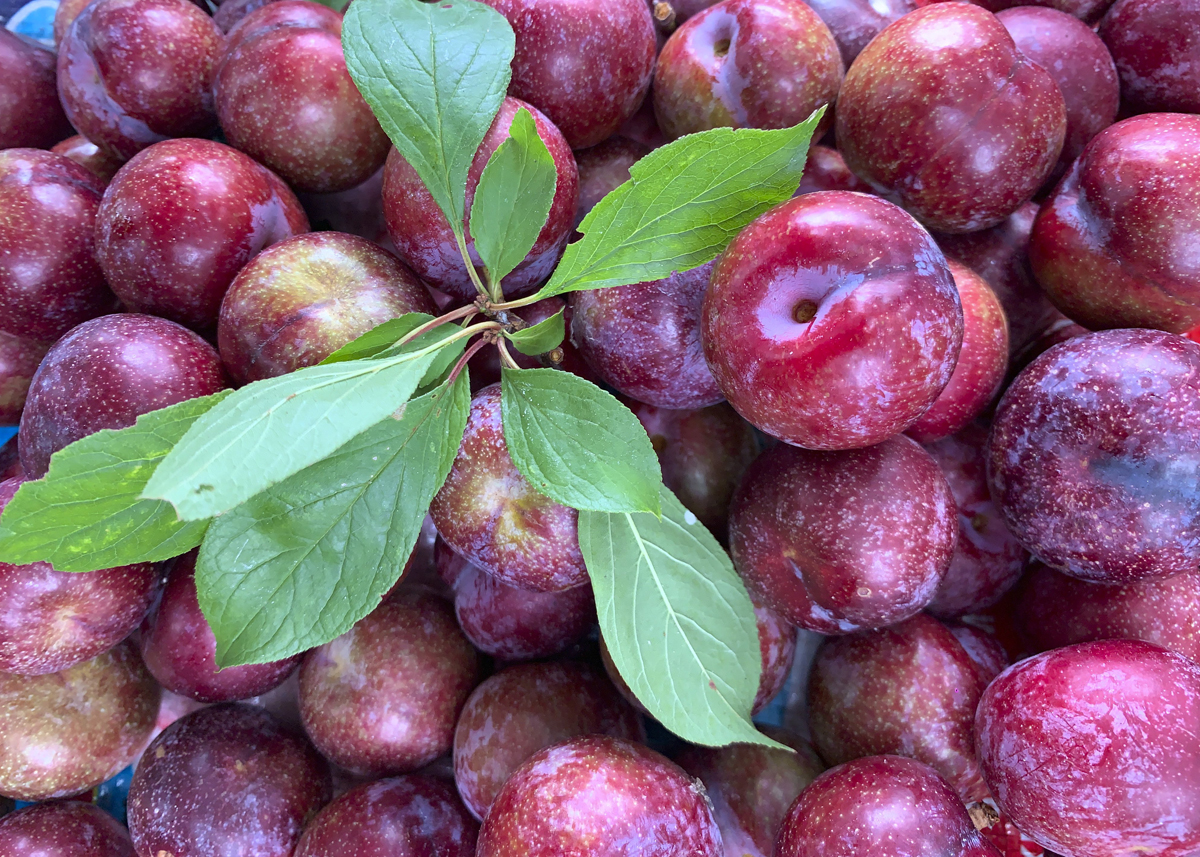
Phieu Travel has had the opportunity to accompany many travelers in discovering each distinctive fruit season during Ha Giang exploration tours. From late-year green oranges in Bac Quang to vibrant red plum orchards in Hoang Su Phi in June, depending on the timing, we integrate orchard experiences into our tours to give guests authentic experiences at local farms. These journeys become even more special, clearly reflecting the seasonality of each ripening fruit.
In this article, Phieu Travel has shared the truth about Ha Giang rock apples with you. Although they don’t originate from the highlands, these apples can still be consumed safely if purchased from reputable sources and carefully washed and peeled. Beyond that, Ha Giang offers many distinctive fruits with delicious and special flavors. Join Phieutravel.com on an adventure to discover the true flavors of the gray limestone region for yourself!
Read more:
- The Ultimate Ha Giang Loop Guide (2025): Itinerary, Map & Tips
- Top 25 Things to Do in Ha Giang: Places, Passes & Villages
- A Guide to the Ha Giang Golden Rice Season (Sept & Oct)
- Ma Pi Leng Pass – The Majestic Beauty of Ha Giang’s Stone Plateau
- Best places to visit in Northern Vietnam a complete 2025 guide
Reference sources: https://suckhoedoisong.vn/tao-da-ha-giang-thuc-chat-la-tao-trung-quoc-co-doc-hai-khong-16923112411233921.htm

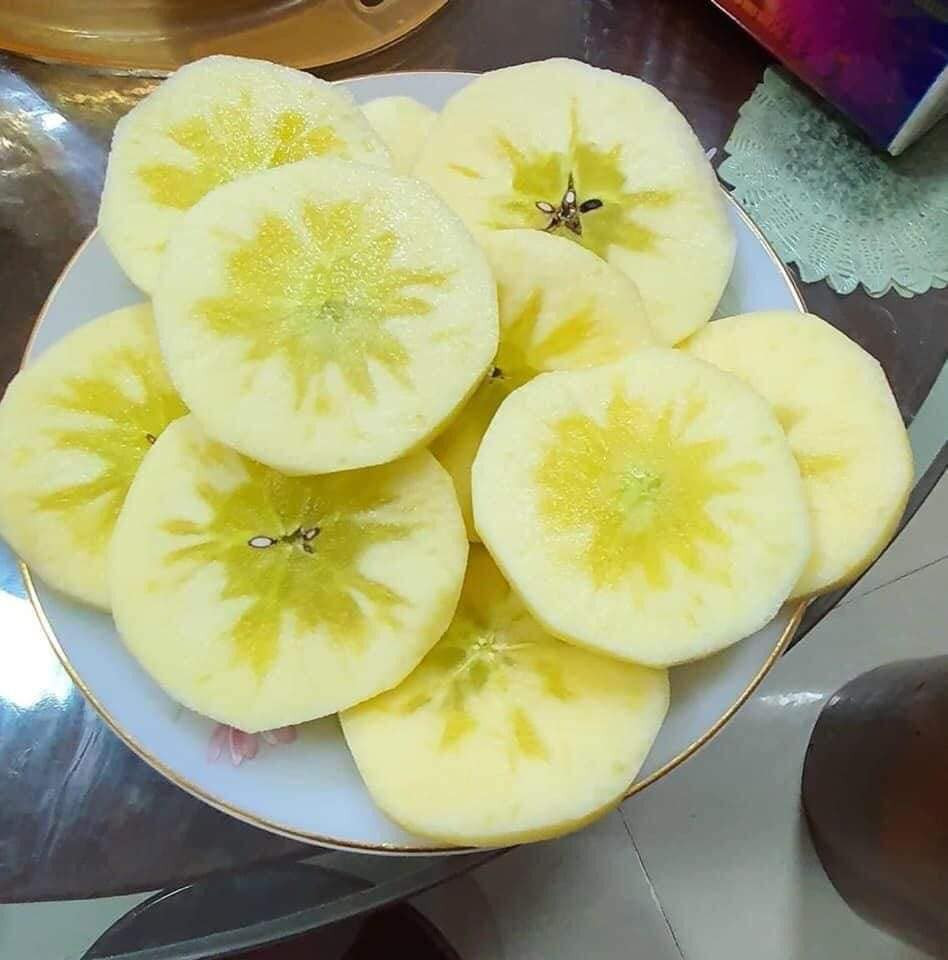
You Might Also Like
Ha Giang Weather in September: Complete Guide for Travelers
Exploring the magnificent Ha Giang Loop in September offers travelers a perfect balance of favorable[...]
Quan Ba Twin Mountains: Ha Giang’s Iconic Fairy Hills and Complete Travel Guide
The mystical Quan Ba Twin Mountains rise from the emerald valleys of Ha Giang like[...]
Vuong family mansion: the architectural marvel and cultural legacy of Ha Giang
Deep in Vietnam’s northern highlands, where mist-shrouded mountains meet terraced rice fields, stands a testament[...]
Ha Giang Loop Safety Tips: How to Ride Securely in Vietnam’s Northern Mountains
The Ha Giang Loop, with its winding mountain roads and breathtaking landscapes, offers one of[...]
The Ultimate Guide to the M-Shaped Curve on Ha Giang Loop
Vietnam’s remote northern province of Ha Giang hides a natural wonder that has captivated adventurous[...]
Most Beautiful Places to Visit in Vietnam: Essential Destinations and Insider Tips
Vietnam captivates travelers with its stunning landscapes, rich cultural heritage, and warm hospitality. From mist-shrouded[...]
Beyond the Beaten Path: Discovering Ha Giang Province in Northeast Vietnam
Ha Giang Province in Northeast Vietnam stands as one of the country’s last frontiers for[...]
Rainy season in Ha Giang: what to expect, when to go, and travel tips
Vietnam’s northern frontier reveals a different face during the rainy season, transforming Ha Giang’s limestone[...]